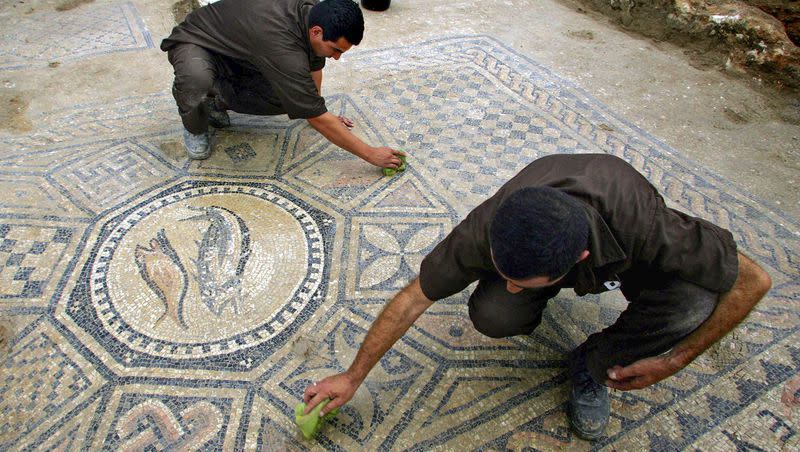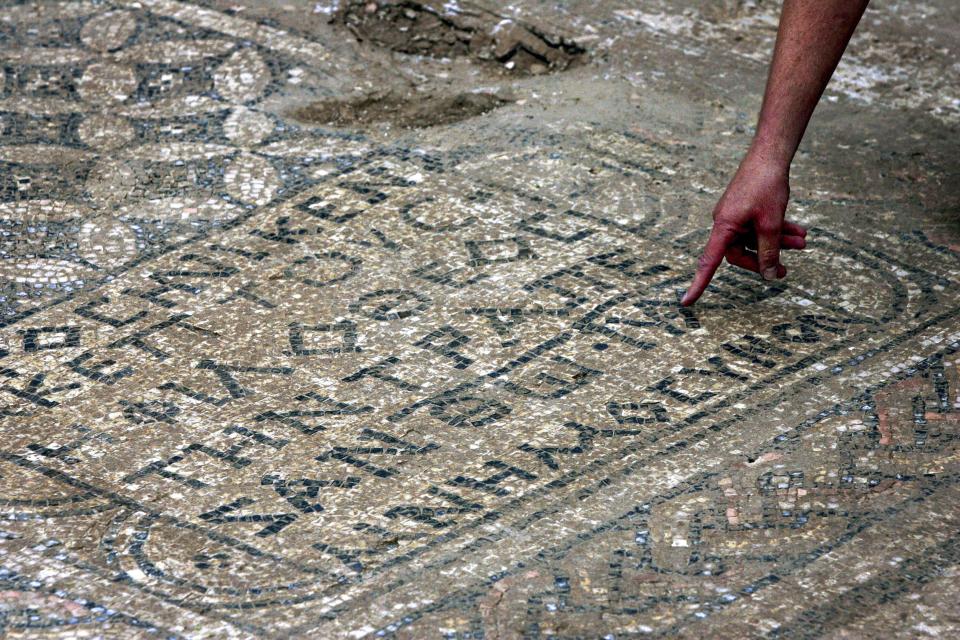Early Christian mosaic in biblical city of Armageddon might be moved to D.C.

Israeli officials are considering whether or not an ancient Christian mosaic should remain in its place or be loaned to the Museum of the Bible in Washington, D.C.
The Megiddo Mosaic is at the center of this proposed deal. Located in the biblical city of Armageddon, it’s believed that the mosaic floor was found in “the world’s earliest Christian prayer hall that was located in a Roman-era village in northern Israel,” according to The Associated Press.
Here’s a closer look at the Megiddo Mosaic and what’s going on with the proposed deal.
Related
What is the Megiddo Mosaic?
The Megiddo Mosaic was found during a dig in 2005 at the Megiddo Prison, according to Laurie Brink at University of Chicago Divinity School. The dig was conducted before the prison was scheduled for expansion.
One of the important elements of the mosaic is the early references to Jesus as God. One of the Greek inscriptions says, “To God Jesus Christ.” Reportedly, archaeologists dated the mosaic due the third century during an era where Christians living in the Roman empire were being persecuted, the AP reported.
The mosaic also names a Roman army officer Gaianus — the donor behind the floor. A woman named Ekoptos is also named, she “donated this table to the God Jesus Christ in commemoration,” per The Guardian.
“Archaeologists are puzzled that a Roman centurion was the benefactor, seeing this as uniquely bold for a representative of an Empire that until the Edit of Milan in 313 CE did not view Christianity as a licit religion,” Brink wrote.

There are other images connecting the mosaic to Jesus. Yotam Tepper, lead archaeologist who discovered the mosaic, said to The Guardian, “There are no crosses on the mosaic floor. In their place is a picture of two fish lying side by side — a very early Christian symbol.”
“This is an extremely dramatic discovery, because such an old building of this type has never been found either in the land of Israel or anywhere else in the entire region. The structure and the mosaic floor date back to the period before Christianity became an officially recognised religion, before St. Constantine,” The Guardian reported.
The significance of the Megiddo site also has to do with what it tells us about early Christianity. The table, donated by Ekoptos, may have been used in an eucharistic celebration — that is, a ritual in memorial of the Lord’s Supper. The site also reinforces that women and military members were part of the early Christian community, Brink noted.
What’s going on with the Megiddo Mosaic deal?
The Israel Antiquities Authority is determining whether or not the Israeli government will be able to loan the mosaic to the Museum of the Bible. A decision is expected in the next few weeks, The Associated Press reported.
The Museum of the Bible in Washington, D.C., houses different antiquities related to biblical studies. The terms of the loan proposal haven’t been made public, according to The Associated Press.
Some experts have expressed concern about moving the mosaic.
Theology professor at University of Birmingham Candida Moss said to the AP, “Once you take any artifact outside of its archaeological context, it loses something, it loses a sense of the space and the environment in which it was first excavated.”

